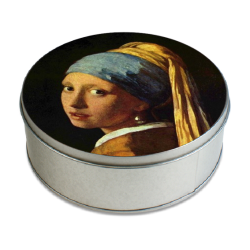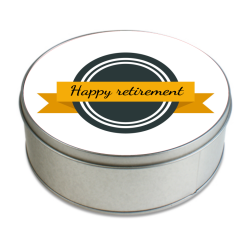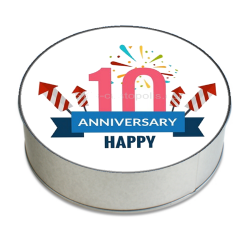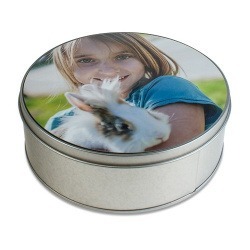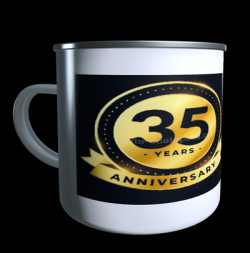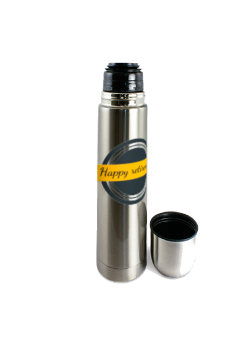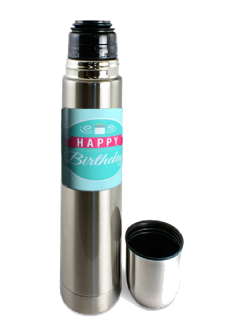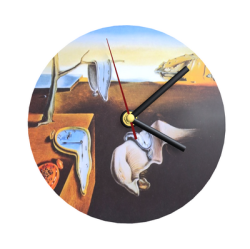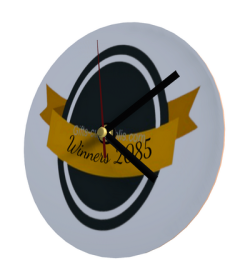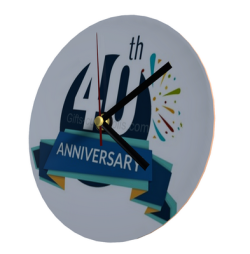Round metal box with...
Stamping Stamping is a technique for manufacturing and modifying objects from a flat, thin sheet of metal (a piece of metal obtained by rolling) whose shape cannot be developed from a mould (e.g. a one-piece car body). The raw material that has not yet been stamped is called Becker. Stamping is a technique widely used in the household appliances industry. Stamping is a technique of "plastic" deformation of the material: elongation or local constriction of the sheet to obtain the desired shape. Stamping is done with very powerful presses. Gifts-custopolis.com proposes metal tins with a lid that can be personalised with different decorations: Mother's Day, Secretaries' Day or professional birthdays, with an unforgettable holiday photo or with a photo of whoever you want. A white metal box personalised as a birthday gift, an unusual birthday gift idea, is already very nice, but decorated with a work of art on the lid it becomes totally unexpected, birthday gifts for a work of art enthusiast!
- Personalisable





































